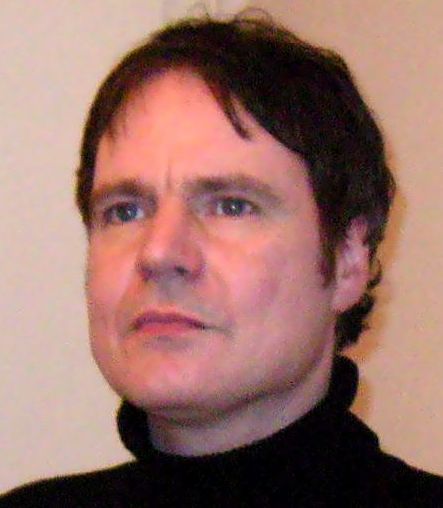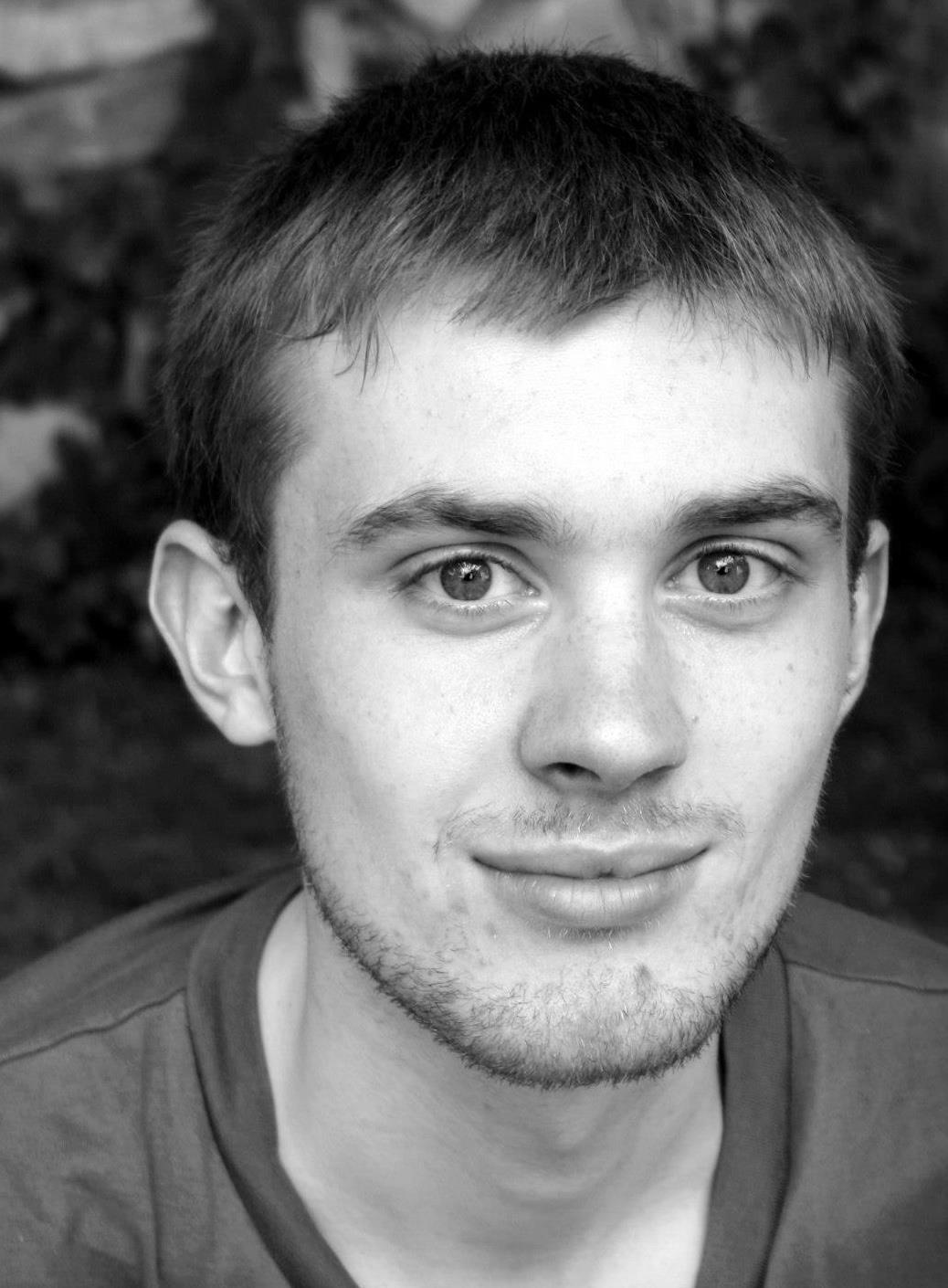ASK & DISCUSS
INDEXWhy you Shouldn't use Shaky-cam
10 years, 6 months ago - Dan Selakovich
Hi all. I haven't been here in awhile, and if you don't know me, my job at shooting people is to piss people off. Some months ago, I did a post on why you shouldn't edit your own film. You can read it here: https://shootingpeople.org/discuss/view/063fed65c6b98257a0aeb2ac
In what is basically a post on objectivity, or the lack of it that we have as filmmakers, I used Paul Greengrass' Bourne films as an example of lost objectivity. But those films are good for something else, too. Never, in the history of film, have I seen so many complaints on blogs, forums, reviews, and in one-on-one discussions about a single film style as I have on shaky-cam and quick cutting. Inexperienced filmmakers and studio executives tend to love it. Everyone else, for the most part, tends to hate it. I'm one of those that hates it. I mean I really hate it. And I see it more and more. But the problem with imitation in general, is that the imitator won't be as good at it or use it correctly. I have only seen shaky-cam used effectively once, in Tom Ford's A Single Man. The reason it works well there, is that it shows the panic of the character. It came at a point when all we'd seen up to then was calm, beautifully composed, shots. It was jarring, and it needed to be. But it wouldn't have worked if the entire film was shot that way.
People (and when I say "people" I mean studio executives) tend to point to the success of Paul Greengrass and the 2nd and 3rd Bourne films in favor of shaky-cam. I argue that without the properly shot first Bourne film (thank you, Doug Liman), the next 2 by Greengrass wouldn't have been at all successful. In fact, I'd wager that if Greengrass had shot the first one, there wouldn't have been sequels. When a certain camera style is constant, it loses its effectiveness. In that, Greengrass blows it. We know Bourne is going to win, but we want to SEE HOW he wins. Think of it this way: if you have a film that is 99% static shots, then at one point you dolly in for a close up, that dolly move has impact. But if every shot in the film is a camera move, the move when you need it loses all meaning.
But here's why shaky-cam doesn't work on a human level: we, as humans, don't see that way. Ever. Shaky-cam is an interruption to our visual sense, and is very dangerous to use. YOU will see your shaky-cam shot differently than your audience. You've seen it dozens, if not hundreds of times. Your eye will fill in what you know to be there and even stuff that isn't. Your audience, seeing it for the first time, cannot compensate for the wild shot or a five frame edit. Depending on screen size, it takes the human eye 3 to 5 frames to recognize what it is seeing. But it does this based on past experience of seeing things (we don't see with our eyes, we see with our brains). Now try wrapping those five frames in a blur of images. There is absolutely no way to discern what we are seeing even on longer shaky-cam shots. Since we don't see in shaky-cam mode in real life, our brains have a hard time filling in with past visual reference. Shaky-cam builds a barrier between your film and your audience. They will never become completely involved in your characters because they will be constantly reminded that they are watching a film. And speaking of screen size, that 7 inch monitor on set will dampen the effect of shaky-cam. On a 40 foot screen, that tiny move is now huge. To you, as director, it will seem the same. To us, the audience, it's a tiny boat in a hurricane.
Dolly shots, tilts, pans and cuts work because that is how we see in everyday life. Try this little experiment I've used on students (I sometimes lecture on directing). Hold up each index finger at arm's length, about 2 feet apart. Just using your eyes (no head turn), try to look smoothly between your left index finger, moving to your right index finger. It's physically impossible to do this smoothly. Your eyes will stop and start. They will try to focus on things in the background, etc. Now try moving your left hand TO your right hand, following the left with your eyes. It's easy to watch your left hand in an absolutely smooth way. That's why dolly shots work: because that's the way our brains work.
Camera movement and placement must work for the film you are making. Lately I see hand-held and shaky-cam used in really inappropriate places. Again, I bring up Greengrass and the Bourne films because they are an easy example to illustrate my point, but he's not the only offender. It's difficult to have an emotional moment between two characters if the camera is jittery. When is the last time you looked into your girlfriend's or boyfriend's eyes with your head bobbing from side to side?
Another trend that comes from Greengrass is the abandonment of screen geography. For example, in the 2nd Bourne, early in the film, an assassin is chasing Bourne and Marie. But we never have a clear idea where the assassin is because Greengrass has dropped screen geography. We feel no tension because we don't know how close to death they are because there is no relationship between the chased and the one doing the pursuing. Shaky-cam and quick cuts can only up the tension if they are used sparingly. They can't replace screen grammar.
If because of this technique, you can't distinguish between the protagonist and antagonist, you've lost the audience--because in that moment, they are trying to figure out who is who. They are out of the film. It creates a visual hiccup.
To completely visually understand the 2nd and 3rd Bourne films, you have to see them more than once, and preferably on a small screen. That's too late. In the example cited above, it took me two viewings on DVD before I completely understood where the bad guy was. 100 years of film grammar shot to hell.
See, the thing is, to be the next Polanski, Hitchcock, Frankenheimer, or fill in the blank, the directors nowadays have to hit the ground running. All the masters we love had time to hone their craft. Those days are gone, it seems to me. No longer can you make a film every two years if you have a bad one. That way of learning your craft is gone, but to get better you have to make films. The sad part is, young directors don't really have that opportunity. I've been in the director's chair as a fixer, and much more time at the editing bench. I've seen it from both sides--a lot.
So I can say with confidence that, as a director, you will see your movie differently than your audience. Not only with shaky-cam, but absolutely everything in your picture. If you know that going in, it can only be a benefit. As I mentioned in the editing post, objectivity, or the lack of it, is a human frailty. And those Cinema Masters already know it. Every director I've met or worked with that's been at it for a while, gets opinions outside his/her bubble about their film. On set, that could be the script supervisor, the producer, the cameraman. In post, it's the editor, the producer, and a hand-picked audience of friends. The only ones that don't go to this trouble are first timers that have had the auteur theory drummed into their heads by well-meaning film teachers and historians. A painter or novelist can please themselves. Filmmakers have investors, bond agents, distributors, an audience and a host of others to please. And if you take the "screw everybody" route, the distributor will just recut your picture anyway (or worse, not buy it). You only have that luxury once you have a hit or two. Be careful you don't make a film outside of human perception (unless it's a sequel to a movie that was a hit).
Listen to your Uncle Dan, kids.
Only members can post or respond to topics. LOGIN
Not a member of SP? JOIN or FIND OUT MORE
10 years, 6 months ago - Dan Selakovich
Well, Karel, I have no reply! 6 feet away on a large TV is pretty much the same! (Though I could argue frame rate and eye scan, but I'll leave it alone). HA!
BTW, I remember your post on 3D. Are there any 3D films I should watch that are out in theaters now? I'm desperate for a 3D film that won't give me a headache, and the tech seems to be improving every day.
10 years, 6 months ago - Dan Selakovich
Not being Devil's advocate at all. Sincere question. You kind of won me over some months ago on 3D and its possibilities. I guess you can teach an old dog new tricks.
10 years, 6 months ago - Karel Bata
@Dan Selakovich Yes, I saw it on DVD, but it was a large screen and sitting 6 feet away.
10 years, 6 months ago - Karel Bata
Did someone mention blinking? So how long is a blink? Much longer than you may think. Blink now. It's over in an instant. But research shows...
The only time I've ever seen the world as wobbly is just before throwing up.
10 years, 6 months ago - Dan Selakovich
Karel, your post reminded me of a friend that went to see the 2nd Bourne film with his dad. His father had to leave after 40 minutes because the constant motion made him physically nauseous. I think that's why these films do better on DVD: small screen mitigate that to some degree.
As for throwing up, my world spins slowly when I'm in that state!
10 years, 6 months ago - Paddy Robinson-Griffin
@Dan Selakovich The Equaliser as in the role Edward Woodward brought to TV? His son, Peter Woodward is currently working (acting, family talent it seems) between London and LA - Just have to flag him if you ever need an English thesp on anything over there, super chap :).
End of off topic chatter...
10 years, 6 months ago - David Graham Scott
This post came up in the Documentary Forum. Are you thinking it's relevant for docs too? My last doc, Iboga Nights, was 99% self-shot and there's a bit of the good old shake from time to time but that's from me having to film in volatile environments (some chap nearly dies in front of me, for example, and we rush to hospital).
I guess you're concentrating on drama though.
10 years, 6 months ago - Dan Selakovich
Oh, god no, David. I didn't post it there, so it must have been shooting people.
In a doc, that camera shake is real. In a narrative film, it's trying to copy a cinema verite feel to give it, in my opinion, a cheap version of reality. Docs give us a "real" version of reality. (Though I suppose if you were shooting a talking head with a hand-held 80mm lens, half hiding behind an over the shoulder, then yes, that would be bad).
10 years, 6 months ago - Harry Baker
Hi Dan – I'm pretty new here, but this was interesting and I wanted to plunge in. I'm not generally a fan of shaky-cam, and a lot of the arguments against it here are very valid, but at the same time I'm one of those 'people' (not a studio exec, so that must make me an inexperienced filmmaker...) who really admire Greengrass's work, and I doubt I'm the only person in that boat.
I think it basically boils down to whether style suits story – the Bourne films are all about uncertainty: shifting moralities, transient lives, different perspectives. An ever-moving, ever-changing camera is perfectly suited to that world, especially given the prominent role of surveillance technology. It's a coherent, consistent shooting strategy on Greengrass's part – occasionally overdone, perhaps, but surely less annoying than films which are classically shot until an action sequence starts, whereupon the cameraman seems to have a seizure... That takes me out of a film far more than a constant style to which I can adjust. Also, shaky-cam as Greengrass employs it is actually pretty varied, ranging from standard handheld with minimum wobble to ultra-blurry whip pans. It's not as if the audience is constantly being subjected to exactly the same camera move in every shot, more that the feel of the frame generally is less-tethered down, less composed. We can't stop moving, anymore than Bourne can.
I also don't think it's a problem that the shaky-cam aesthetic doesn't mimic the human eye. It's not meant to. What it evokes is news footage, amateur video, fragments of the information age, all complimentary to the story in this case. If you can rationalise the camera style in that way – and I suspect the majority of the audience do so subconsciously – I think it goes a long way towards helping you adjust. And I think you're wrong to suggest that Greengrass is some kind of studio hack waving a camera around because he doesn't know how to do it properly – I'd argue that he's very much aware of what he's doing, and that he makes his decisions for a reason.
The example you single out for criticism – the car chase in India – is a case in point. That scene isn't about tension so much as it is about (spoilers!) setting up the shock of Marie's death. By keeping the exact geography of the situation unclear, Greengrass is able to have his cake and eat it: the audience knows that the bad guy isn't where Bourne thinks he is, but at the same time we are sharing Marie's position: unsure where the threat is coming from and unable to effectively counter it. This is hardly throwing film grammar out of the window, but manipulating it for a desired effect – surely the essence of good filmmaking?
Compare the Moscow car chase later in the film (https://www.youtube.com/watch?v=NzfSLgWkTlY), which is equally chaotic in shooting style, but rigorously establishes its geography. The plot has largely been resolved by this point and what matters is seeing how the showdown plays out. Accordingly, the spatial relationship between the cars is constantly reasserted, so that by the time the chase reaches the tunnel (around 1.15 in the video) almost every other shot is a wide angle with both vehicles in frame. Close-ups of actions being performed are followed by wides showing their impact, and close-ups of the men's faces are largely framed as matching reverses, suggesting the 'collision course' that they are on. Those are choices made by a director who knows what he's about.
Granted, none of this means much if you can't actually see what's going on, and I guess that this is where we get close to 'agree to disagree' territory. But I've never had this problem with the Bourne films. Even in the blurriest fight scenes, there's a pretty clear cause and effect: every action and reaction is shown. We punch in to emphasise a blow and come out to establish its impact; we lose our bearing in a rapid flurry of cuts and motion, and find it again in a slightly wider, longer shot. Sure, it's sometimes exhausting to watch, but these are scenes about rapid, instinctive action, and the speed of the cutting reinforces that – we are following movements that are almost too quick to pinpoint, which keeps us on the edge of our seats, but we're not actually being cheated of visual information. Crucially, continuity is always maintained: everything is there, even if the line is crossed or motion blurs.
Lesser directors use the same techniques to avoid showing action – I guess that filming everything in blurry close-up saves time and money on fight choreography – but Greengrass uses it to heighten what's already being shown. Where will the next blow come from? What's the next angle? What will the counter-move be? Where's the cut? Story and style are tied together. A lot of this is in the editing, of course, but there's a level of craftsmanship in Bourne sequels that I simply don't see in most of the films that imitate their technique.
On a tangent, do you make a distinction between 'handheld' and 'shaky-cam'? How would you classify something like the Omaha beach scene in Saving Private Ryan?
10 years, 6 months ago - Karel Bata
It was NYPD Blue that brought us the shak-icam plague http://www.youtube.com/watch?v=BUjMs1JrhJM&t=0m21s
Bad enough on TV, but in the cinema it's nauseating. And at 1:56 in that clip the camera even manages to jump out of the prison cell. Was it cramped in there? Or is it just cool to see the bars in the FG? But the biggest mystery to me: why was Dennis Franz cast as some sex god..?
What I hate are sequences where a lot of close-ups are shot and it's been left to the editor to make sense of it later. Lazy, and so annoying.
But I liked Bourne 2. It worked for me. No problem.
As to your rapidly looking between two forefingers: bad example. If your eye misses the second finger it's because of blanking. So what is blanking? It's your brain literally switching off visual information that's useless, such as the blurred rubbish you'll get as you pan from fingertip to fingertip. You never see that. Look in the mirror and look from eyeball to eyeball rapidly. Go on, just do it. If your brain is working correctly it will seem instantaneous, and you will see no eyeball movement at all. Nada. Now look at someone else doing it and you'll clearly see the movement. Yours seems instant while they are slow. Weird. Strangely, in that brief period that their eyes are moving and you are watching them they are seeing nothing, but are under the strong illusion of continuous perception.
So, shaki-cam is a totally unnatural phenomenon and doesn't replicate anything you ever actually see - except for brief moments when you fall over. In fact, wait for it, motion blur doesn't exist! It's entirely a cinematic invention that's become a convention (a song there, but a bad one). You never see motion blur in pre-cinema paintings. Still, I bet you think it's really there. Try panning your eyes rapidly now, where you are sitting. Instantaneous, and do you see any blur? Now do that again a few times and pay attention to what's going on. You may get (I do) a feeling that the pan is actually taking up a small period of time which you're somehow failing to see.
So, back to your example of when you pan from fingertip to fingertip. Your brain has to make a guess as to where to pan your eyeballs (it doesn't track information as they move) and upon arrival leaves any correction up to saccades.
What are saccades? Oh Google it.
All this magic is very rapid and invisible to you. But watch someone else doing it and you'll see it. Weird.
;-)
10 years, 6 months ago - Dan Selakovich
"As to your rapidly looking between two forefingers: bad example." Oops, I must have not been clear. You look SLOWLY and SMOOTHLY from your left finger to your right. As if it were a dolly shot. I was trying to make the point that it is physically impossible, and that's why dolly shots work and shaky-cam doesn't.
Your example of saccades is why CUTS work. Why our brain doesn't get all mumbled as we cut from wide to close.
10 years, 6 months ago - Dan Selakovich
Absolutely right, Paddy. If you want to have an affect on your audience, going out of the norm of your particular shooting style can do that, but I think within reason. I saw a Denzel Washington movie recently called "The Equalizer." I enjoyed it very much until one small scene where Denzel was fighting a bad guy. The scene was dark, quick cuts, and shaky-cam. Instantly I was out of the movie because I was trying to figure out who was who. The Equalizer was going to win, but damn, I really wanted to see how he won. I found it weird that the director picked this one fight to drop his style and adopt Greengrass'. I think any change has to fit organically into what visual style was set up in the first place. And that style has to fit the emotion of the character. That's why when Ford used it on "A Single Man" it worked: it fit the character's emotion at that point in the film.
10 years, 6 months ago - Dan Selakovich
@Paddy Robinson-Griffin That's right, Paddy. It was based on the TV show. The film was directed by Antoine Fuqua--who I usually don't care for that much, but I liked him here. Thanks for the recommendation! I'll keep my ears open.
10 years, 6 months ago - Dan Selakovich
Yeah, I get it. I think everyone should pretend they are shooting in 3D; it allows for good composition!
10 years, 6 months ago - Dan Selakovich
So true! I can't for the life of me remember the film, but I saw a silent film years ago in which there was a battle. It went from shaky-cam (though not as shaky as now) for 3 or 4 cuts, but then back to a wide vista. It gave you just enough time for your brain to go a little haywire, before relaxing you back into the vista. Now entire scenes are haywire. Go figure.
10 years, 6 months ago - Dan Selakovich
Thanks John and Patty. Nice to be back.
I think what you're saying, John, is that the youth are more visually literate today. That might be true. I'm reminded of a study on deaf people compared to video gamers. The deaf have a heightened awareness of 3D space. Those who play a lot of video games were found to have this same ability. But I'm not sure shaky-cam or very loose hand held applies, for the simple reason that we don't see that way. Our brain and body smooth out our sight. We could be running at full tilt, and we see like a steadicam move. In life, we have a geography of place since we always see from our point of view.
The one director that I think is a complete master of movement is Kurosawa. But it's not simply his camera moves (where there is always a reason for the move), but the movement of actors or the movement of nature (wind plays a big part in his films). I think the closer we make films in the way we see as humans, the more impact they will have. But hey, I'm old and set in my ways.
10 years, 6 months ago - Paddy Robinson-Griffin
Agreed - I'm not fond of any gimmicky filming styles - once in a while you can add tension to a scene by breaking from the norm, but it's by breaking from the norm that it has impact.
Nice to have you back, Dan.
10 years, 6 months ago - Dan Selakovich
I guess my first question would be, did you see the Bourne films on a big screen for the first viewing, or on DVD? Screen size affects how you see a film, and allows your brain to process more visual information.
I don't think Greengrass is a studio hack. His film "Bloody Sunday" is pretty brilliant.
My basic problem with Shaky-cam is that it separates the audience from the film. Because we don't see that way, we are constantly aware that we are watching a film. Are you tense because of the camera work and its manic style, or are you tense because you are involved in the story? Two very important distinctions.
My main problem with filmmakers copying this style is because it's lazy or to be kind, easy. Actor's love it. They don't have worry about hitting a mark or whether that gun is in frame. It's a purer sort of acting. Inexperienced filmmakers love it because they don't have to worry about framing or screen geography, and can just grab shots and work it all out in the editing room. Or worse, they use it when the emotions of the characters don't call for it.
As for hand-held, it depends. Most camera ops I know try to be rock solid, but you will get some movement just by the nature of being hand-held. This is the type of hand-held that Speilberg uses. Plus, you won't find any 5 frame cuts on Omaha beach.
If, at any time, you can't tell who the protagonist is from the antagonist, you've lost the audience. This happens a lot in the Bourne sequels. When I go in to fix a movie, my first and foremost goal is to keep the audience in mind. What kind of emotional effect will a scene have on them, and what can I do to bring that about fully. As soon as the audience says, "Wait. What?" I've lost them. If a 5 frame edit, or several in a row, is what they are seeing, or I jump the line without a bridge shot, I've created a visual hiccup and they are out of the movie. I've lost the emotional connection between them and the film, and it can take 30 seconds or so to get them back. You can't really do that scene after scene. The opposite can be true as well. I love Terrence Malick, but really hated "The Tree Of Life". Just about every shot was beautiful, and held for a very long time. But it was like eating a big bag of candy. The first pieces are delicious, but by the time your reach the end of the bag, you're sick as a dog. You can't give people too much sugar. The Bourne sequels were like a hotdog eating contest, trying to shove as many hotdogs down your throat as you can in 2 hours. How many really tight and unsteady over the shoulders can you take before the style gets in the way of story? And audience connects to the actor by the eyes. If you don't really see the emotion in those eyes, you don't get a connection. Because of the first Bourne film, the audience already knew Bourne. They already had an emotional connection to him, because Liman created that connection.
10 years, 6 months ago - Karel Bata
You being devil's advocate? It's all superhero movies at the moment, and a lot of those aren't really all that well done!
Ang Lee has an interesting Iraq war movie in the pipeline that's been shot in 4K 3D, and apparently HFR. Should be interesting. Unfortunately most theatres that can (just about) screen that won't be able to do it triple-flash, but maybe that doesn't matter.
I've noticed they're more upbeat about 3D in other countries. Here we had Sky, and then briefly the BBC, so it seemed to be full-steam-ahead, but since they've dropped it, with a consequent loss of job opportunities, the mood is much deflated. The French on the other hand have just launched La 3D TV. Much more positive.
10 years, 6 months ago - John Lubran
I'll second that, both the well articulated and considered article and the very warm welcome back Dan.
Just a couple of mitigations I'd suggest however; at the end of the day stylistic choices can be nothing other than subjective. If a significant enough audience like and are willing to buy a particular style then that's enough to justify it. "There's no accounting for taste" as they say.
I remember a time when we taught editing basics and students watching films and TV programmes were asked to count the seconds between cuts and transitions; they averaged six to seven seconds. The idea was to underline how the human eye and brain work and how to keep things compelling. Since then those cuts and transitions have reduced to an average of four to five seconds, it's a difference that suggests an evolution. It was once almost a sacred law never to to cross the line without the use of essential visual transitions. Crossing the line rules back then can be traced to the early pre TV days when people had not yet adapted brains to the confusion of sudden changes in motion direction. These days those rules are often ignored because the modern brain handles these anomalies quite comfortably.
Some styles are purely cultural. I was a bit involved in the West African film sector a while back. Locally produced films were liked and supported by bums on seats and DVD/Video sales very much more than just about any Hollywood movie, despite there being no difference in language or price to the consumer and even though in my judgement those local films were absolutely appallingly wretched in every conceivable way.
The well developed 'golden rules' of film making remain powerfully effective and one takes a risk breaking them; but we see such rebelliousness succeeding more and more. It will be interesting to see how emerging generations view things as people evolve, even if it does include one step backwards and then two forwards!
10 years, 6 months ago - Richard Connew
When I saw Avatar in 2009 I decided I want to film 3D stereoscopic, an easy decision to make but not such an easy things to do I was soon to discover. Over the years I have watched with horror the amount of shaky films either filmed in 3D natively or later converted to 3D and all I can say is its no wonder 3D has slipped from the horizon again as it did in the 50's. I have no idea where this trendy shake came from but in 3D it makes you feel sick so it can't be good in 2D either. I watched Dr Zhivago again yesterday as I often watch past masters work such as David Lean for inspiration, and during all of that film every shot was steady with a various dollies and pans as required. The other thing about the scenes in that film is every scene was specifically composed and layered to look great (something you need to make great 3D) and each had a single colour that stood out even going as far as to make the charge at night almost black and white until the red banners appeared. Shaky films IMHO simply spoil a film or if its in 3D make you feel physically sick! If people worried more about the composition of a shot and make up of a scene their films would be so much better. There has for some time in 3D circles long been a debate over whether directors should be 2D directors making 3D films or 3D directors making 2D films and the answer for me at least is 3D directors making 2D films that way more thought is put into the composition and shots are smooth and well planed to avoid problems with 3D. It does however make shots in 2D versions of the same film seem in comparison to other "modern film styles" look different but not if you look at David Leans films for instance. And the bonus is a 3D film you can enjoy for its visual feast without feeling sick shame other directors filming in 3D didn't consider this as 3D might be more popular if fewer audiences had been made to feel ill.
10 years, 6 months ago - John Lubran
Ah ha! saccades, so that's what it means. If everyone had the full vocabulary, as used in the English language, conversations and written articles would be much more concise. Not much chance of that though, our language is blinking massive.
Having said that though, in the same way as a picture or a three line poem can be worth a thousand words, the language and vocabulary of film, while not always translating well into everyone's subjective language/reality paradigm/etc., needs some degree of degeneralisation. Personally I'm with everyone here in not often appreciating so called cutting edge techniques, but then I am 65! The 'golden rules' of film making have evolved after more than one million 'professionally' made films have been tried since the 1890's; every so called cutting edge technique, other than those arising from new technologies, has been thoroughly explored.
Wobblycam is one of the first experiments to have been roundly dismissed as being inconsistent with 'high production values'. It's been a core element of our film making course for the last quarter of a century.
Strangely though, there seems to be millions of tasteless idiots who don't seem to mind as much as I do. I imagine it must be significant, just can't quite work out why!







